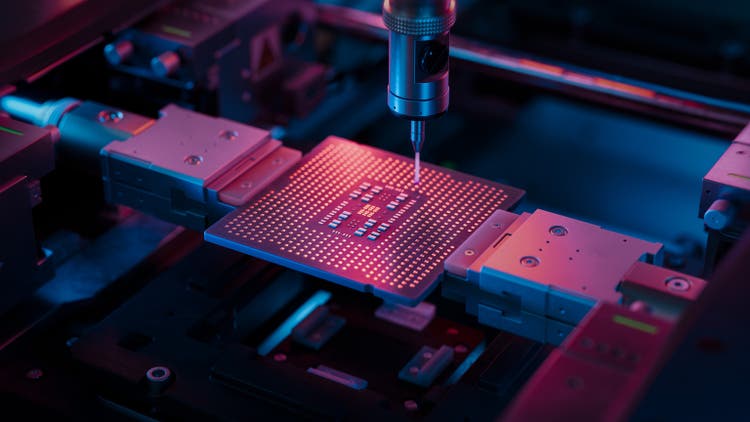Business
Micron’s Strategic Shift to High-Bandwidth Memory Gains Momentum

Micron Technology, listed on NASDAQ under the ticker symbol MU, is undergoing a significant transformation that may not yet be fully recognized by investors. Despite discussions surrounding a potential oversupply in DRAM (dynamic random-access memory) and concerns about cyclical downturns in the memory market, Micron is rapidly expanding its production of high-bandwidth memory (HBM). This strategic pivot positions the company to capitalize on the increasing demand for advanced memory solutions across various sectors.
The shift to high-bandwidth memory is crucial for Micron, as it caters to the growing needs of data centers, artificial intelligence applications, and graphics processing. HBM offers substantial advantages over traditional memory types, including higher speeds and improved energy efficiency, making it ideal for bandwidth-intensive tasks. Analysts predict that this transition could bolster Micron’s market position significantly, especially as the demand for high-performance computing continues to rise.
Market Context and Future Potential
The memory market has faced challenges in recent months, with many analysts highlighting a downturn in DRAM prices. This situation has raised concerns about the sustainability of memory manufacturers. Nevertheless, Micron’s focus on high-bandwidth memory allows it to differentiate itself in a competitive landscape. As industries increasingly rely on data-driven technologies, the demand for HBM is expected to grow.
In the fiscal year 2023, Micron reported revenues that exceeded $20 billion, driven largely by its memory solutions. The company’s investments in HBM technology are anticipated to enhance its revenue streams. By 2025, analysts forecast that the global HBM market could reach $10 billion, creating opportunities for Micron to establish itself as a leader in this segment.
Micron’s commitment to innovation and product development is evident in its recent announcements regarding new HBM products. With the introduction of Micron’s 1.5GHz HBM2E memory, the company is set to provide faster and more efficient memory solutions, appealing to a broad range of high-performance computing applications.
Strategic Moves and Industry Outlook
In addition to advancing its high-bandwidth memory technology, Micron is also strategizing to optimize manufacturing processes and cost efficiency. These efforts are designed to mitigate risks associated with fluctuating memory prices and ensure the company’s competitiveness in the global market. The company’s ability to adapt to changing market conditions plays a crucial role in maintaining investor confidence.
The memory industry is projected to experience a resurgence as the demand for memory solutions in emerging technologies continues to expand. Analysts emphasize that Micron’s proactive approach to high-bandwidth memory will likely yield positive results, making it a formidable player in the memory market.
As Micron continues to navigate the complexities of the memory industry, its focus on high-bandwidth memory may provide the necessary edge to thrive in a challenging environment. Investors and industry watchers are advised to keep a close eye on Micron’s developments, as the company’s strategic initiatives could have significant implications for its future growth.
In conclusion, while the memory market grapples with short-term challenges, Micron’s commitment to innovation in high-bandwidth memory positions it well for long-term success. The company’s proactive measures and strategic focus on this high-demand segment could ultimately redefine its trajectory in the technology landscape.
-

 Politics4 weeks ago
Politics4 weeks agoSecwepemc First Nation Seeks Aboriginal Title Over Kamloops Area
-

 World5 months ago
World5 months agoScientists Unearth Ancient Antarctic Ice to Unlock Climate Secrets
-

 Entertainment5 months ago
Entertainment5 months agoTrump and McCormick to Announce $70 Billion Energy Investments
-

 Science5 months ago
Science5 months agoFour Astronauts Return to Earth After International Space Station Mission
-

 Lifestyle5 months ago
Lifestyle5 months agoTransLink Launches Food Truck Program to Boost Revenue in Vancouver
-

 Technology3 months ago
Technology3 months agoApple Notes Enhances Functionality with Markdown Support in macOS 26
-

 Lifestyle3 months ago
Lifestyle3 months agoManitoba’s Burger Champion Shines Again Amid Dining Innovations
-

 Top Stories2 months ago
Top Stories2 months agoUrgent Update: Fatal Crash on Highway 99 Claims Life of Pitt Meadows Man
-

 Politics4 months ago
Politics4 months agoUkrainian Tennis Star Elina Svitolina Faces Death Threats Online
-

 Sports5 months ago
Sports5 months agoSearch Underway for Missing Hunter Amid Hokkaido Bear Emergency
-

 Politics5 months ago
Politics5 months agoCarney Engages First Nations Leaders at Development Law Summit
-

 Technology5 months ago
Technology5 months agoFrosthaven Launches Early Access on July 31, 2025





















